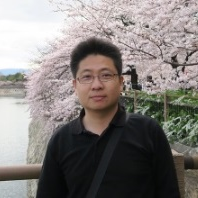Advanced Materials and Devices for Applied System Innovation
A special issue of Materials (ISSN 1996-1944). This special issue belongs to the section "Electronic Materials".
Deadline for manuscript submissions: closed (10 November 2023) | Viewed by 7961
Special Issue Editors
Interests: semiconductor physics; optoelectronic devices; nanotechnology
Special Issues, Collections and Topics in MDPI journals
Interests: nano-optoelectronics; photo detector, nano-materials
Special Issues, Collections and Topics in MDPI journals
Interests: nano-optoelectronics; photo detector; nano-materials
Special Issues, Collections and Topics in MDPI journals
Interests: semiconductor physics; optoelectronic devices; nanotechnology
Special Issues, Collections and Topics in MDPI journals
Interests: microsystem design; nanotechnology
Special Issues, Collections and Topics in MDPI journals
Special Issue Information
Dear Colleagues,
7th IEEE International Conference on Applied System Innovation 2021 (IEEE ICASI 2021, https://2021.icasi-conf.net/) will be held in Alishan, Chiayi, Taiwan on September 24-25, 2021; it will provide a unified communication platform for material topics. Scientists all over the world actively want to discover new advanced materials in electrical and mechanical engineering. In recent years, the applications of advanced materials have been highly-developing fields, notably, in the areas of semiconductor and electronic device technology, design, manufacturing, physics, and modeling. Therefore, the fields of electrical and mechanical materials have always been hot research areas. The scopes of iTIKI IEEE ICASI 2021 not only encompass material sizes at the nanoscale, but also in various dimensions, where the onset of size-dependent phenomena usually enables novel applications.
This Special Issue selects excellent papers from iTIKI IEEE ICASI 2021 and covers the following scopes, including fundamental and advanced materials of electrical and mechanical engineering, their synthesis and engineering, their application in optical sensors, magnetic, acoustic, and thermal transduction, their integration with many elements, designing of electrical or mechanical devices, evaluation various performance and exploring their broad applications in industry, environmental control, material analysis, etc. We invite investigators to contribute original research articles, as well as review articles, to this Special Issue.
Potential topics include, but are not limited to:
- Developments of advanced materials for new electrical and optical properties
- Nanomaterials for preparation and applications
- Combinatorial methods of advanced materials for mechanical design and optimization
- Advanced materials for preparation and applications
- Subjects related to electronic thin films and coating technology
- Synthesis engineering of advanced materials
- Advanced materials in mechatronics applications
Prof. Dr. Sheng-Joue Young
Prof. Dr. Liang-Wen Ji
Dr. Yen-Lin Chu
Dr. Yi-Hsing Liu
Dr. Stephen D. Prior
Guest Editors
Manuscript Submission Information
Manuscripts should be submitted online at www.mdpi.com by registering and logging in to this website. Once you are registered, click here to go to the submission form. Manuscripts can be submitted until the deadline. All submissions that pass pre-check are peer-reviewed. Accepted papers will be published continuously in the journal (as soon as accepted) and will be listed together on the special issue website. Research articles, review articles as well as short communications are invited. For planned papers, a title and short abstract (about 100 words) can be sent to the Editorial Office for announcement on this website.
Submitted manuscripts should not have been published previously, nor be under consideration for publication elsewhere (except conference proceedings papers). All manuscripts are thoroughly refereed through a single-blind peer-review process. A guide for authors and other relevant information for submission of manuscripts is available on the Instructions for Authors page. Materials is an international peer-reviewed open access semimonthly journal published by MDPI.
Please visit the Instructions for Authors page before submitting a manuscript. The Article Processing Charge (APC) for publication in this open access journal is 2600 CHF (Swiss Francs). Submitted papers should be well formatted and use good English. Authors may use MDPI's English editing service prior to publication or during author revisions.
Keywords
- nanomaterials
- optoelectronic device
- mechatronics
- advanced materials
- electronic thin films










